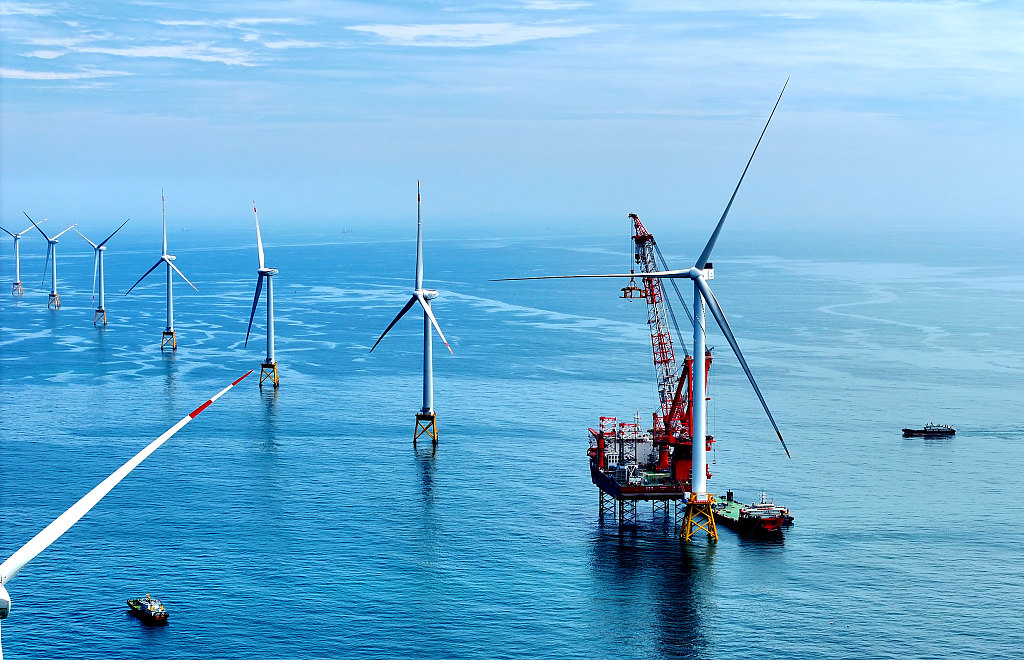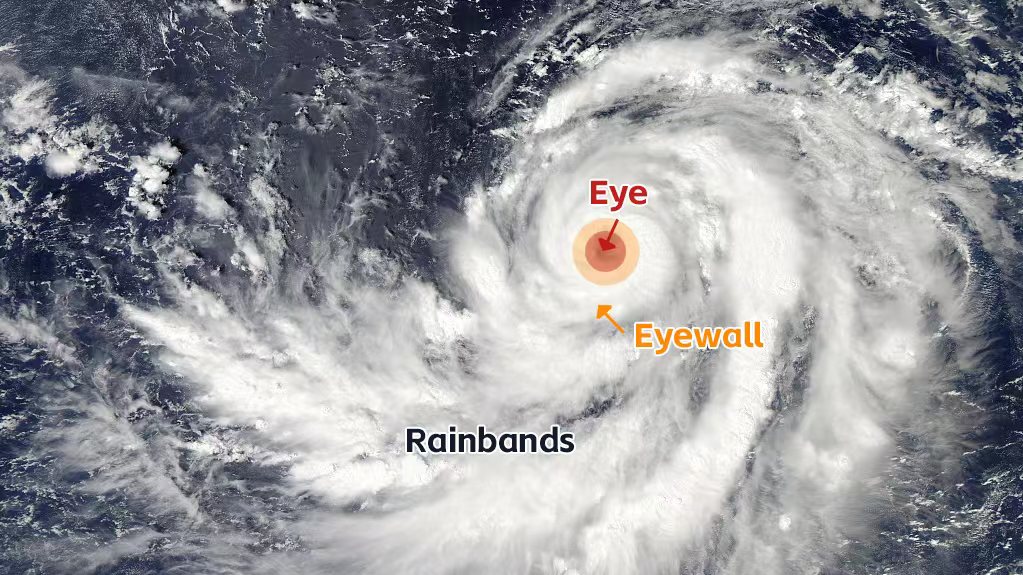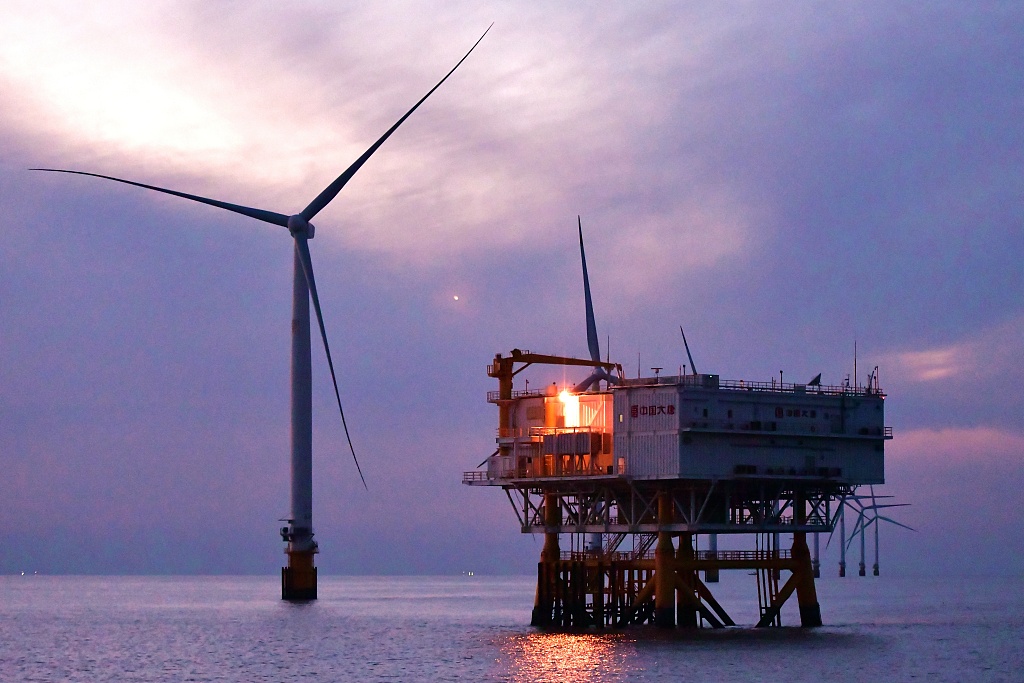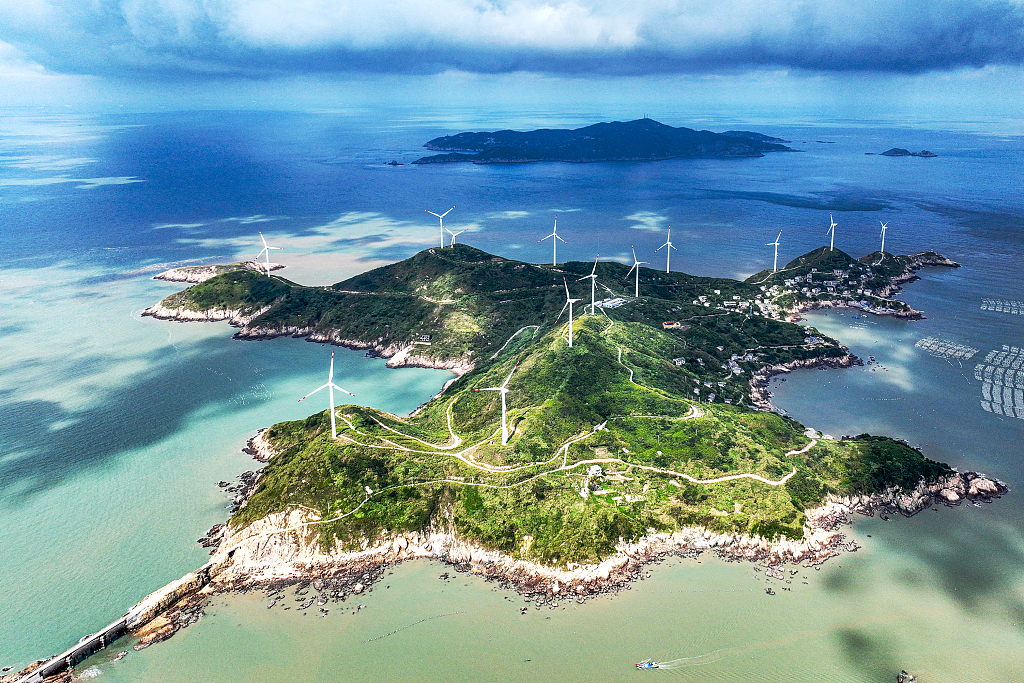03:39

From typhoons and floods to heat waves and mountain fires, extreme weather events have been affecting people across the globe. The new energy industry has also been affected, including the wind power sector.
"There have been many challenges for the wind power sector, including those caused by climate change, cold waves, extremely high temperatures and extremely strong wind," Li Wei, chief engineer of Renewable Energy Engineering Institute, PowerChina Huadong Engineering Co., Ltd., told CGTN.

An offshore wind farm in southeast China's Fujian Province. /CFP
An offshore wind farm in southeast China's Fujian Province. /CFP
Studies have shown that rising temperature in the Arctic could reduce the temperature difference with the equator, affecting the wind speed in the mid-latitude region and the region's wind resources.
Moreover, extreme cold waves bring low temperatures and cause ice to form on the equipment. For example, low temperatures could affect the fluidity of lubricating oil, ice could affect blade load and sea ice could impact the structure's stability.
"All these adversely impact equipment life, power generation efficiency, and safe and stable operation," Li said.
The expert said that typhoons could be either good or bad for wind power.

Structure of typhoon. Yin Yating/CGTN
Structure of typhoon. Yin Yating/CGTN
He explained that the size of typhoons could range from hundreds to thousands of kilometers. The eyewall of a typhoon is the strongest and most destructive area, which could adversely affect offshore wind turbines and their structures. However, if the wind farm is within the rainbands, the increased wind speed induced by typhoons could provide significant benefits to the wind farm.
Measures to ensure power supply
Extreme weather has also resulted in power shortages. For instance, people use air conditioners more frequently in hot weather, leading to a surge in electricity consumption.
Regarding the maintenance of wind power supply during extreme weather, Li stated that in-depth research into heat-resistant and frost-resistant materials is essential, and the reliability and stability of wind turbines need enhancement to deal with the impacts of extreme weather.
"We also need to use digital tools to ensure the safe construction and stable operation of wind farms," stated the expert, adding that China has constructed over 30 million wind farms, and their overall operation remains relatively stable.
Reducing environmental impacts

An offshore wind farm in Yancheng City, east China's Jiangsu Province. /CFP
An offshore wind farm in Yancheng City, east China's Jiangsu Province. /CFP
Although wind power is a type of clean energy, it still has certain environmental impacts during construction and operation.
The impacts on the regional ecological environment or natural landscape during the construction and operation of offshore wind power equipment mainly include visual impacts, noise, impacts on birds and fishes, and electromagnetic interference.
"In the early stages of project planning, we would conduct thematic research and demonstrations on ecology, light, sound, and electromagnetic to avoid sensitive areas of the ecological environment, allow passage for animals to migrate, and integrate the wind farm into the natural landscape to create beautiful scenery," Li said.
"During the construction and operation stages, we would provide effective protection and restoration measures for the soil and water environment, conduct environmental monitoring, implement vegetation protection, and release fish fry."

Wind turbines on an island in Zhoushan City, east China's Zhejiang Province. /CFP
Wind turbines on an island in Zhoushan City, east China's Zhejiang Province. /CFP
China has become one of the world's largest markets for wind power.
Data from China Renewable Energy Society shows in 2022, China, excluding its Hong Kong, Macao, and Taiwan regions, added more than 49 million kilowatts of installed capacity, with onshore wind power adding nearly 45 million kilowatts of capacity and offshore wind power adding over 5 million kilowatts. By the end of last year, the cumulative installed capacity in China exceeded 390 million kilowatts, with 360 million kilowatts on land and over 30 million kilowatts offshore.
Videographer: Zhao Yuxiang
Video editor: Yang Yiren
Cover image: Li Wenyi